SRAM Eagle Powertrain
- Motor: SRAM Drive Unit (powered by Brose)
- Torque: 90 Nm
- Power: 680 Watts
- Battery: 630 Wh or 720 Wh; optional 250 Wh range extender
- Display: Eagle Powertrain AXS Bridge Display
- Controls: AXS Pods
Stated Weights:
- Drive Unit: 2.9 Kg / 6.4 lb
- 630 Wh battery: 3.1 Kg / 6.8 lb
- 720 Wh battery: 4.1 Kg / 9.0 lb
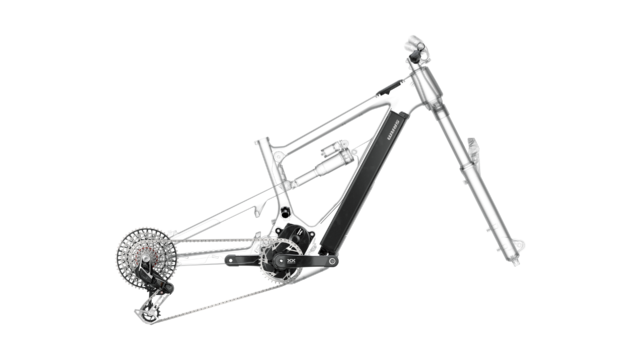
Intro
It’s no great surprise that SRAM has entered the eMTB drive system fray, but just what their inevitable system would look like was more of an open question. As expected, SRAM has done a lot to integrate their wireless AXS technologies as part of a holistic approach aimed at streamlining the ride experience, but just how far they’ve gone down that path — and the details of the drive itself — are pretty interesting. In contrast to the often overwhelming adjustability and customization options of their competitors’ drive systems, SRAM’s approach is to simplify every aspect of riding an eMTB. We look forward to spending time with it to see how this all plays out on the trail; in the meantime, let’s take a closer look at the details.
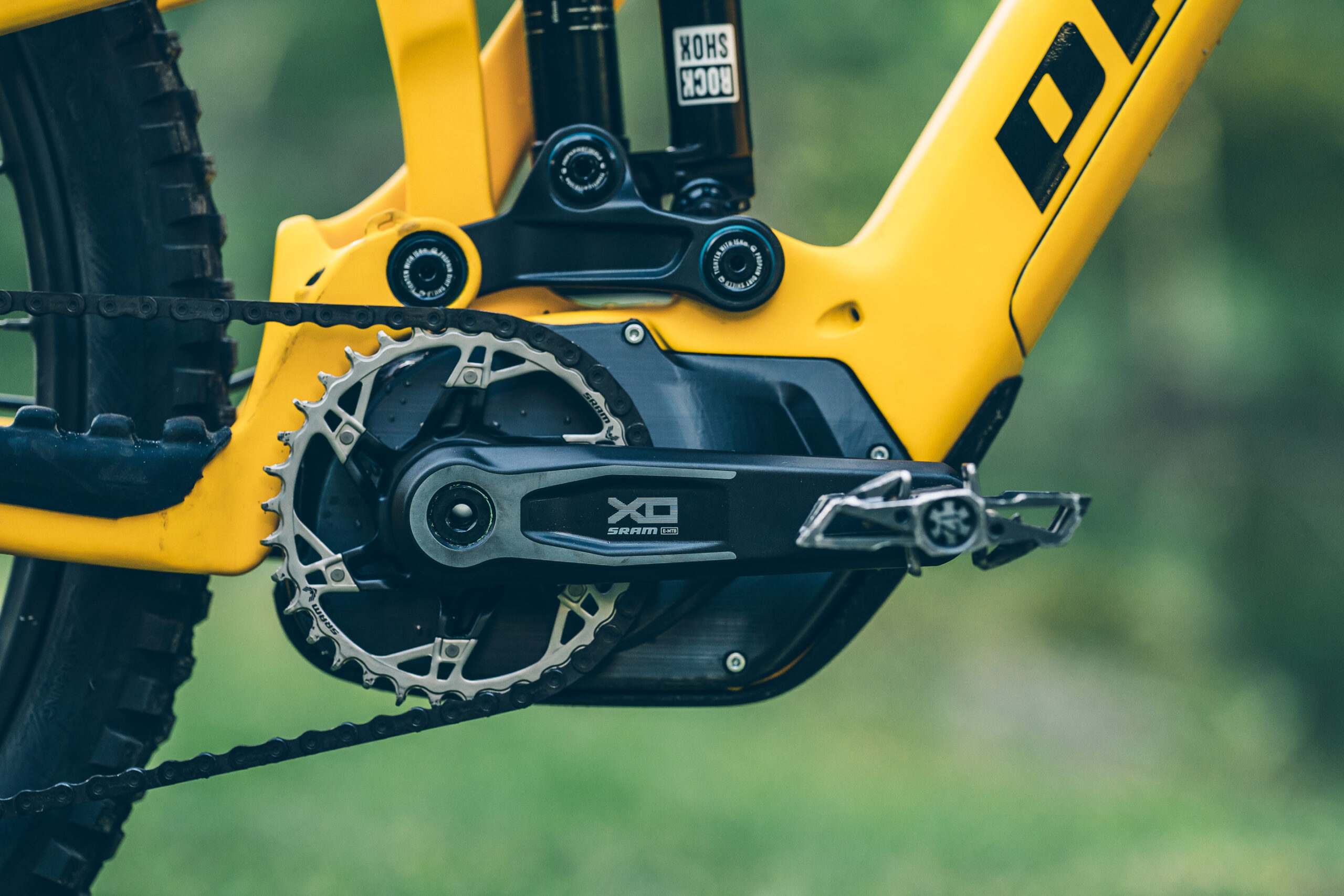
Motor
SRAM has partnered with Brose for the drive unit of SRAM’s Eagle Powertrain, and it makes sense to hand that off to a company with experience manufacturing electric motors. The stated 90 Nm of peak torque bests Bosch and Shimano by 5 Nm and, unsurprisingly, is the same as the Brose-made motors in Specialized eMTBs. The Eagle Powertrain’s peak power is stated at 680 Watts, again coming in higher than the Bosch Performance Line CX (600 Watts), Shimano EP801 (600 Watts), and Specialized 2.2 (565 Watts) motors. That said, it isn’t the most powerful option out there — that distinction goes to Rocky Mountain’s Dyname 4.0 motor, which churns out a class-leading 108 Nm of torque and 700 Watts of peak power.
Numbers tell a small part of the story, though, and how the motor delivers its power is equally important. SRAM states they put in considerable engineering effort and worked with eMTB Blackbox athlete, Yannick Pontal, when developing the software that they claim delivers a natural feel. Now, I find “natural” to be a very subjective term, and honestly think it is overused when describing an eMTB’s power delivery characteristics — once we get a chance to ride the Eagle Powertrain system, we will be comparing it to the other available drive systems and attempting to accurately sum up each drive system’s performance and “feel.”
SRAM claims the Eagle Powertrain offers best-in-class derating (i.e., less power loss under hard riding conditions due to heat buildup). They attribute this to the use of heat-resistant materials that have superior thermal performance. Heat management isn’t a new concept in electric motors, and competitors have also claimed improvements in this area.
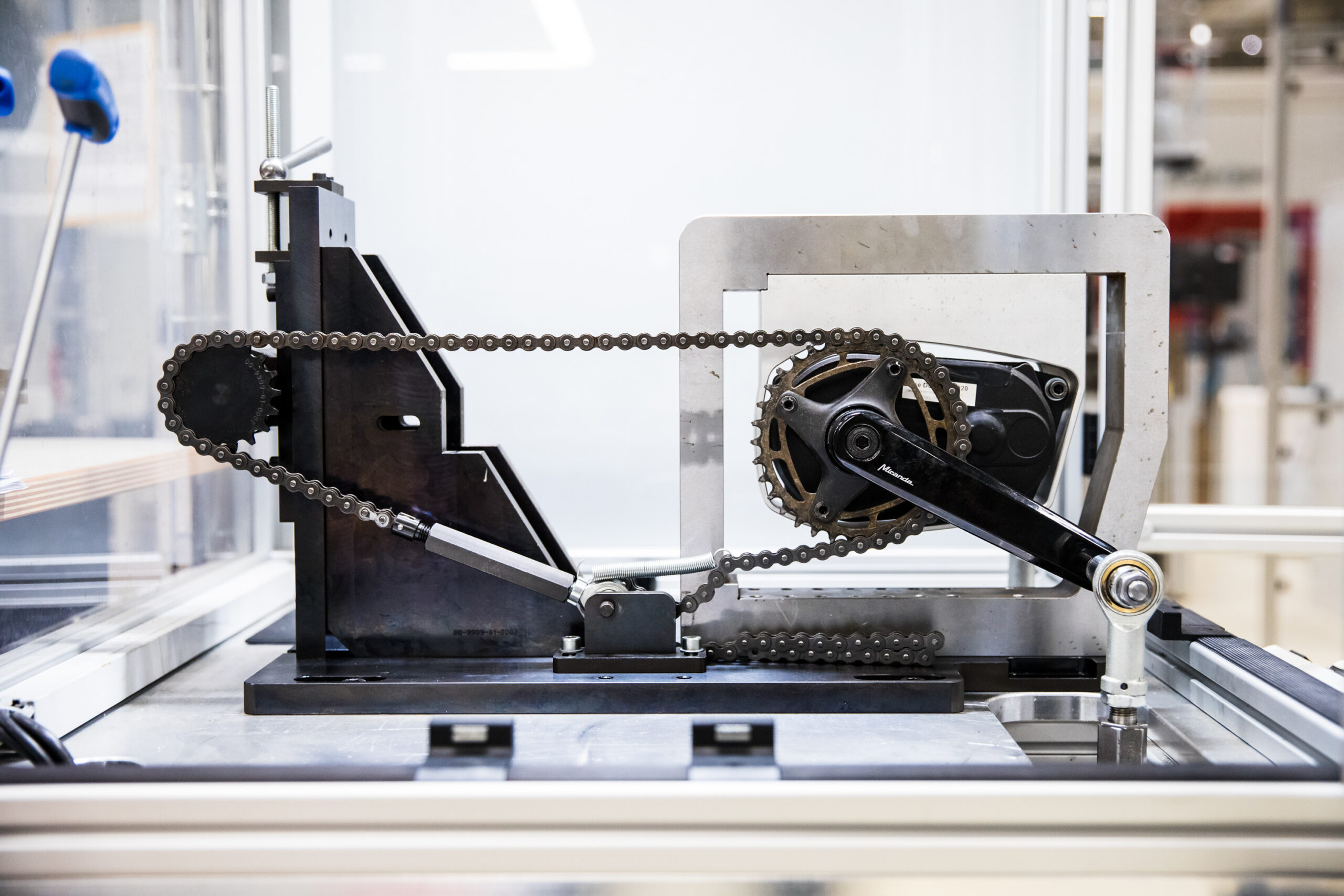
SRAM has taken a simplified approach to much of the design of the Eagle Powertrain. For starters, there are only two ride modes to choose from. “Range” mode is for getting the most time and distance out of the battery, and “Rally” mode is all about having maximum power. Taking a look at my own eMTB riding habits, I primarily use full power mode and only drop down to low power modes when I start getting nervous about running out of power. My guess is SRAM’s market research returned similar results, so in theory, pairing down the modes to only the ones most riders use is a good idea — again, we’ll see how this works out on the trail.
Other features that we’ll cover in more detail below include Auto Shift and Coast Shift, both of which are made possible by the integration of the Eagle Powertrain Drive Unit and SRAM’s AXS Transmission. And not to be forgotten, there is also a Push mode (SRAM’s verbage for walk mode), which provides assistance up to 6 km/h.
Batteries
Two main battery sizes and one range extender will be offered for the Eagle Powertrain, at least to start. The main batteries will have either 630 Wh or 720 Wh of capacity, with the optional range extender adding 250 Wh to the mix. That’s all fairly standard stuff, and honestly, it’s nice to see SRAM not get into a battery range war. I find batteries in the 700–750 Wh range to be plenty big for ninety percent of the riding I do, and having the range extender option is a great way to add range for those big days without being saddled with the added heft of a massive battery for everyday riding. The main battery can be configured to be removable or fixed, at the discretion of the frame manufacturer.
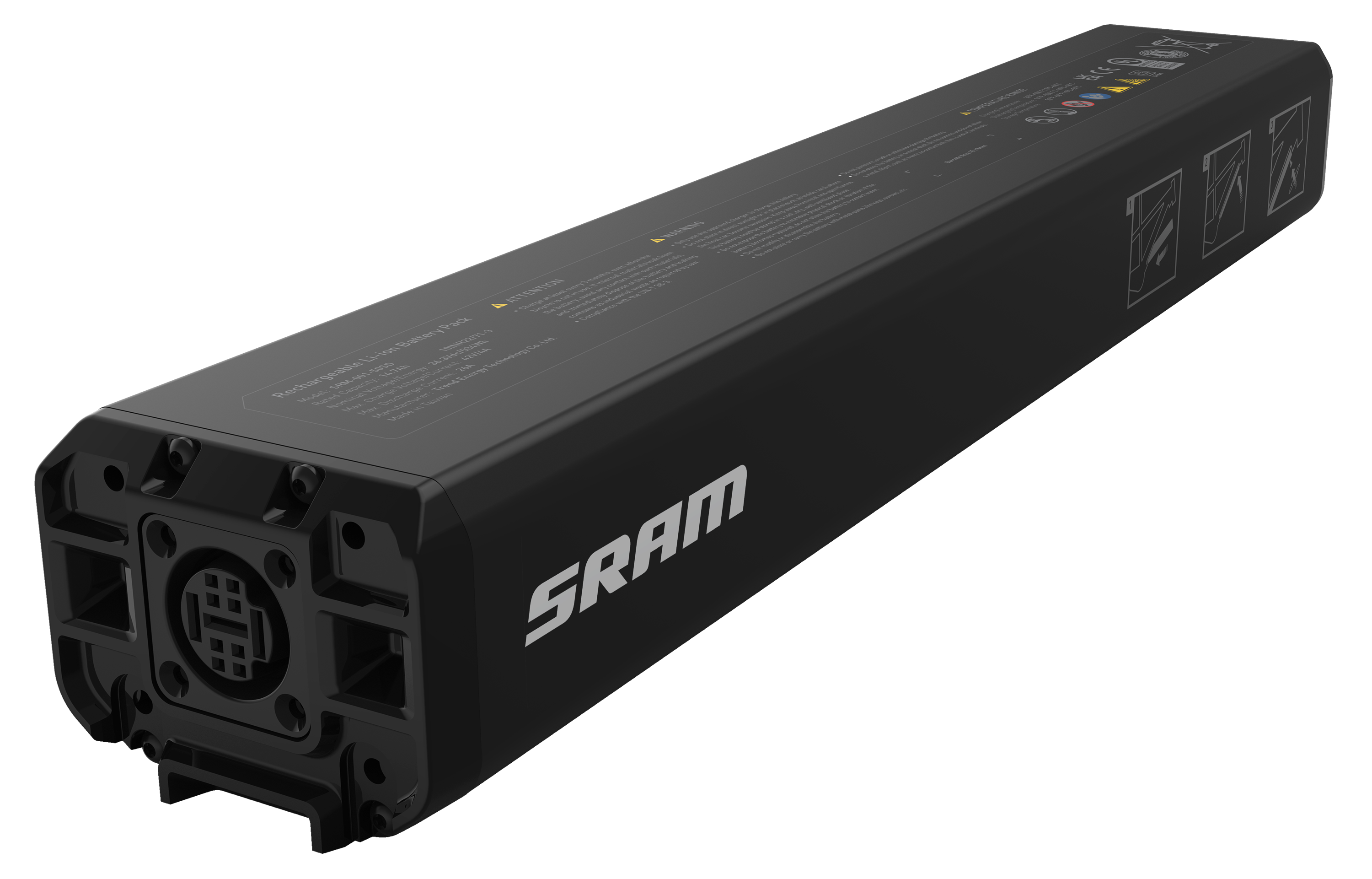
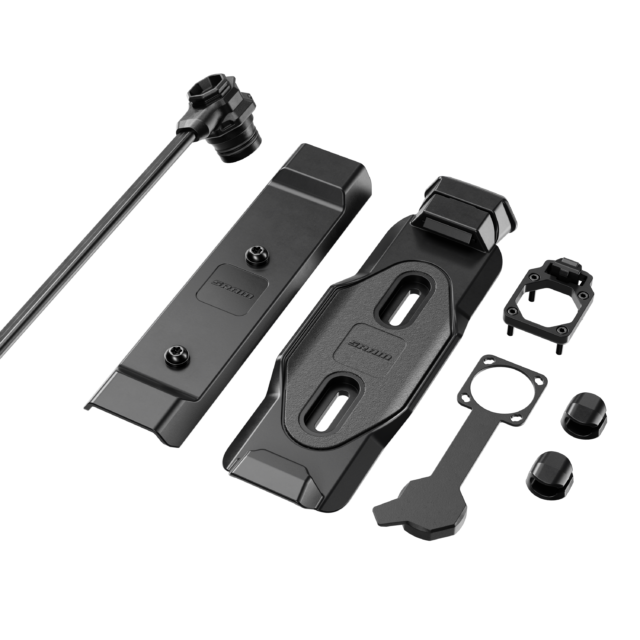
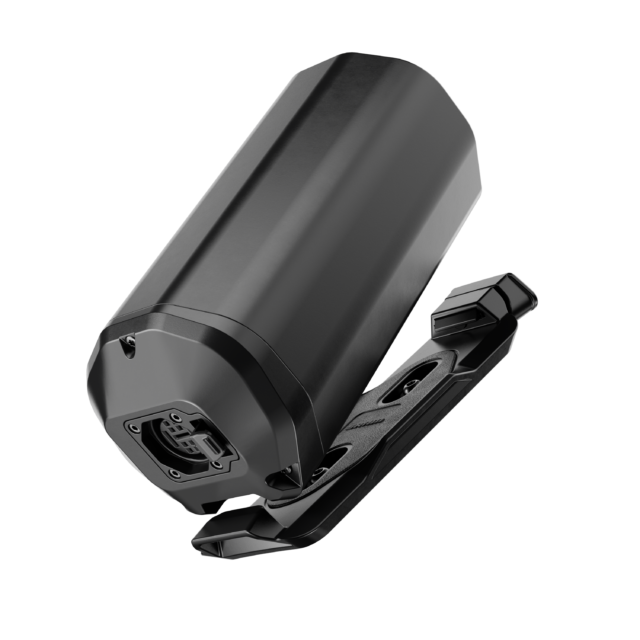
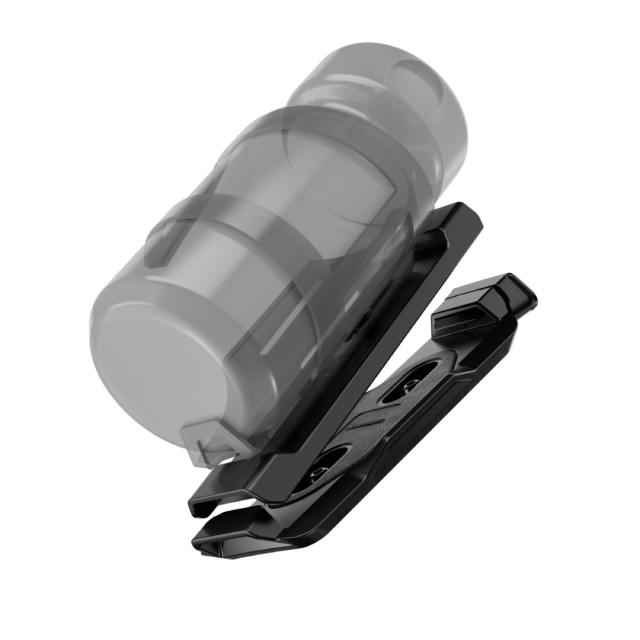
SRAM’s AXS Transmission rear derailleur can be powered by a standard AXS battery, or it can be tied into the Eagle Powertrain’s main battery with the SRAM Extension Cord. The Extension Cord snaps into the same spot on the derailleur that the AXS battery snaps into. It sounds like the decision as to how to power the derailleur will be up to the OE bike-frame companies. Personally, I would want it tied into the main battery so I never have to think about it. SRAM claims the derailleur draws such a small amount of power that it is inconsequential to the range. If you happen to drain your main battery, the battery is said to still have enough reserve power for approximately 2 hours of shifting after the motor shuts down.
Controls
The Eagle Powertrain system uses AXS Pod controllers on the left and right sides of the handlebar. Like other AXS components, they are, of course, wireless. Unlike in the AXS Transmission application, where you can use the older-style AXS shifter, the Powertrain can only be used with the newer AXS Pods that launched alongside Transmission earlier in 2023. All the buttons are assignable, except for the top left button, which has to stay assigned to the Push Mode (walk mode) only.
SRAM does say that the Eagle Powertrain can be used without one or both of the AXS Pod controllers, if you want to run a different drivetrain or dropper post. You’ll lose some functionality (e.g., Push Mode requires a left AXS Pod) but the motor itself works fine without either, and you can toggle between ride modes on the Bridge Display (more on that below). Auto Shift and Coast Shift, of course, require a T-Type groupset (more on those below, too).
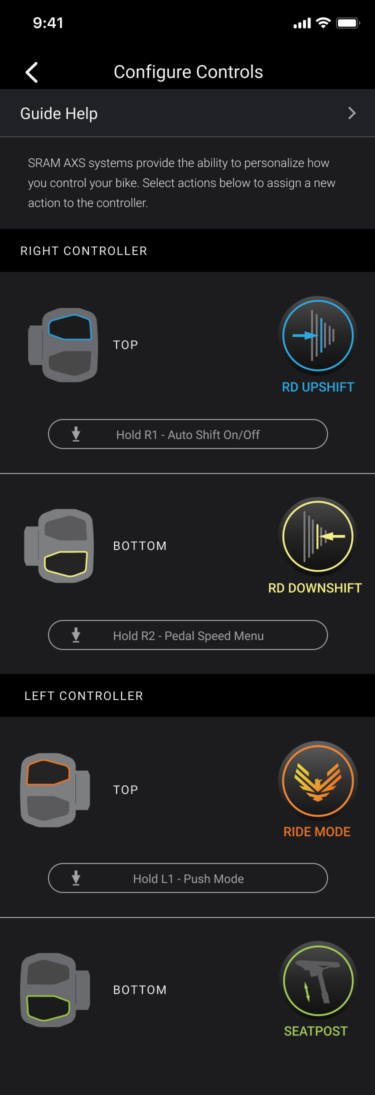
The four total buttons on the two AXS Pods are use a combination of short presses and longer holds to toggle through the various settings, in addition to shifting and actuating the dropper post. The default settings are shown here, but most are configurable through the AXS app.
You can also tune the performance of the two ride modes through the phone app, adjusting the maximum power output and peak assist percentage. The Range and Rally modes can be configured separately.
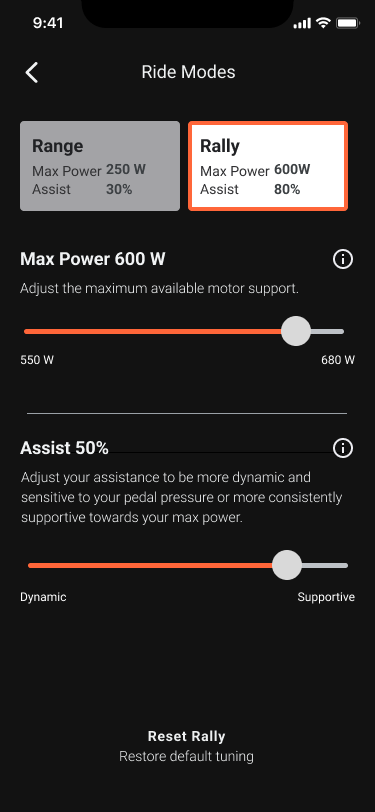
Display
The Eagle Powertrain brain, or “nerve center” as SRAM calls it, lives in the AXS Bridge Display, which is integrated into the top tube. The information displayed is quite simple: ride mode, Auto Shift status with pedal speed setpoint (i.e., desired cadence for the Auto Shift mode), and battery power as a percentage. I’m a fan of top tube displays, with the Specialized TCU being my favorite full-featured one. The SRAM AXS Bridge display doesn’t come close to the Specialized TCU in the amount of data available, but it’s a step above the very minimalistic Bosch top tube display, since the SRAM version does show the actual battery percentage remaining.
There are two buttons on the AXS Bridge Display. The top button turns the system on or off with a long press, whereas a short press of the top button puts the system in Service Mode — this is a clever feature that keeps all the accessories powered on but shuts off the motor. Service Mode, as the name implies, is for working on the bike, allowing you to shift the Transmission without the motor activating, making working on the drivetrain safer. The lower button is used to pair the system or to toggle between ride modes. The display is waterproof and protected by tough Gorilla glass.
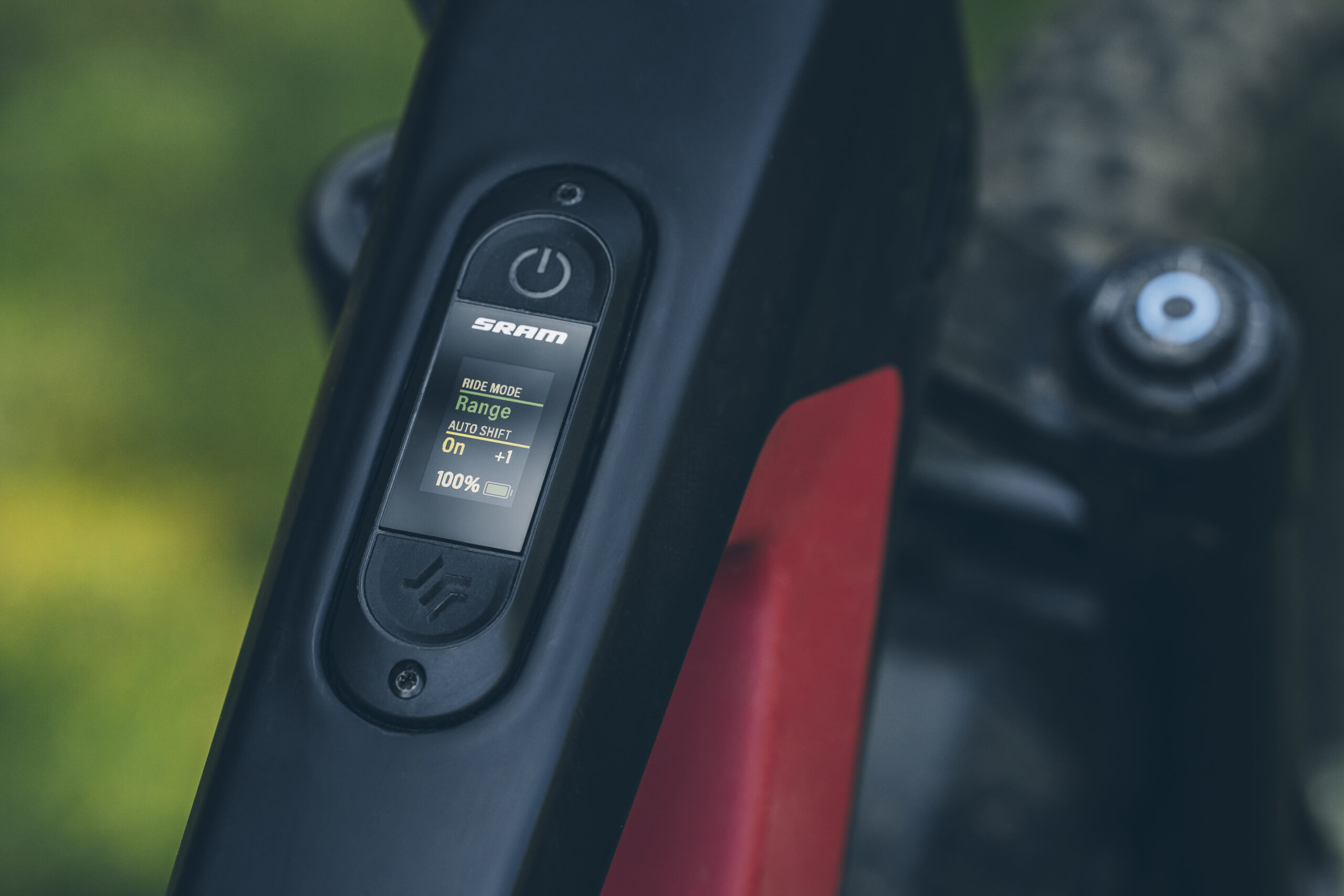
Integration
We expected the Eagle Powertrain to feature a high level of integration with SRAM’s existing technologies and were not disappointed with the inclusion of the Auto Shift and Coast Shift features. SRAM isn’t the first to include automatic and coast shifting features on an eMTB drive system; the Shimano EP801 system, when paired with Shimano’s Deore XT Di2 drivetrain, offers this capability.
In the case of the Eagle Powertrain’s system, you can turn Auto Shift on and set your pedal speed setpoint via the app, or from the AXS Pod controller, and the Auto Shift system will automatically shift the AXS Transmission to keep it in the prescribed cadence range. There are seven setpoints, ranging from slow to fast, to tailor the cadence to your preferred pedaling speed. It also seems like this Auto Shift function will operate much like a modern paddle shift transmission in a car, in that, when in auto mode, it can still be momentarily overridden by shifting manually from the pod, and then will revert back to auto shifting.
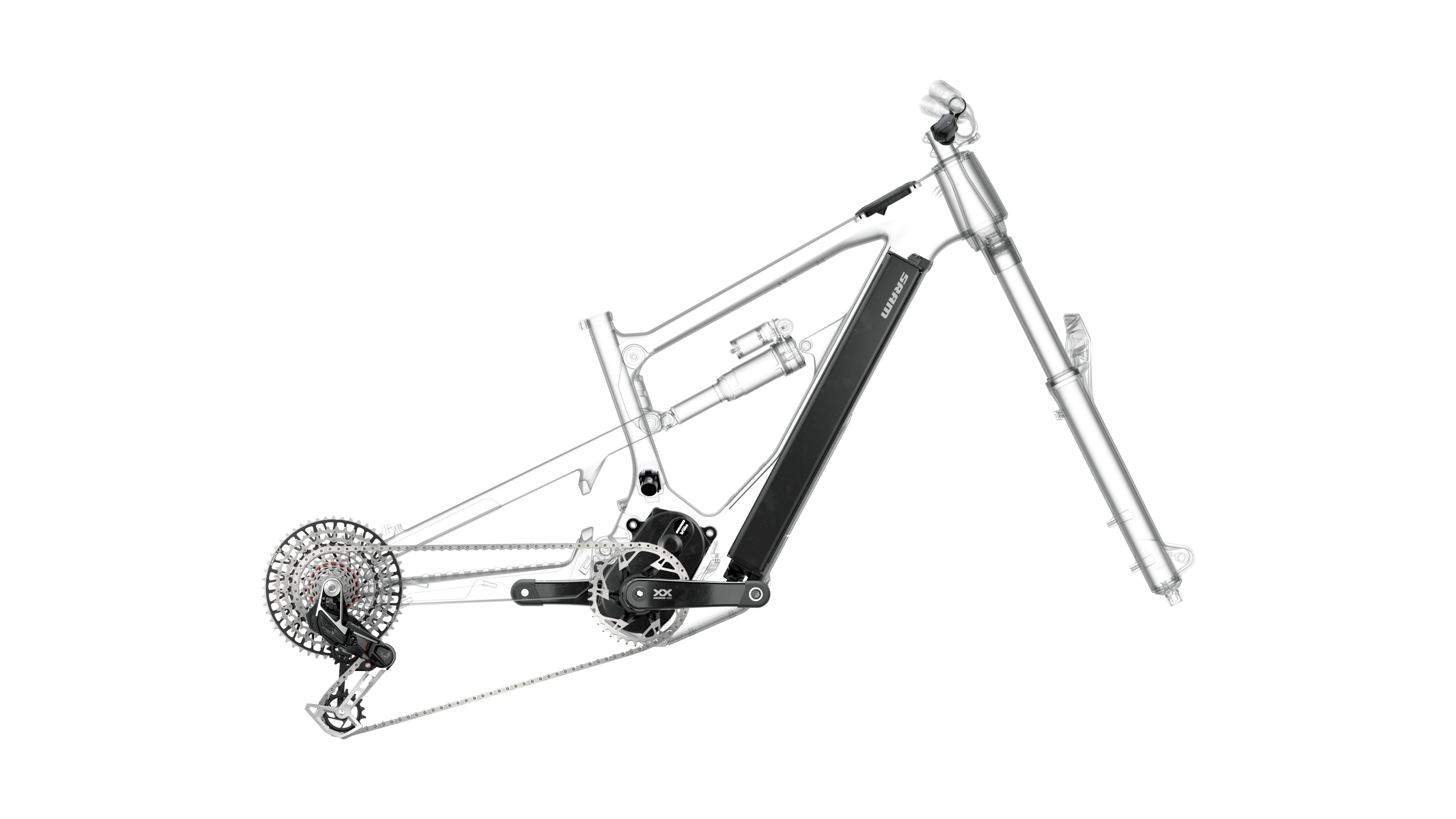
The Eagle Powertrain’s Coast Shift allows the Transmission to be shifted while not pedaling. The chainring moves independently of the cranks and can be advanced by the Drive Unit to execute shifts while coasting. Of all the baked-in features of the Eagle Powertrain, this one stands out to me as one that has the potential to really impact technical riding performance. I’m looking forward to learning a new shifting technique that I think will make quick transitions from descending to climbing easier and/or faster.
The Eagle Powertrain system is designed to work with the RockShox Reverb AXS seatpost, which is a very good seatpost and has been one of my personal favorite AXS components. But it is expensive and is showing its age, with the longest travel option still only 170 mm, which is simply not competitive anymore. Now, you can use a mechanical seatpost of your choice, but — and this is a big but — the mandatory left side AXS Pod will interfere with remote placement.
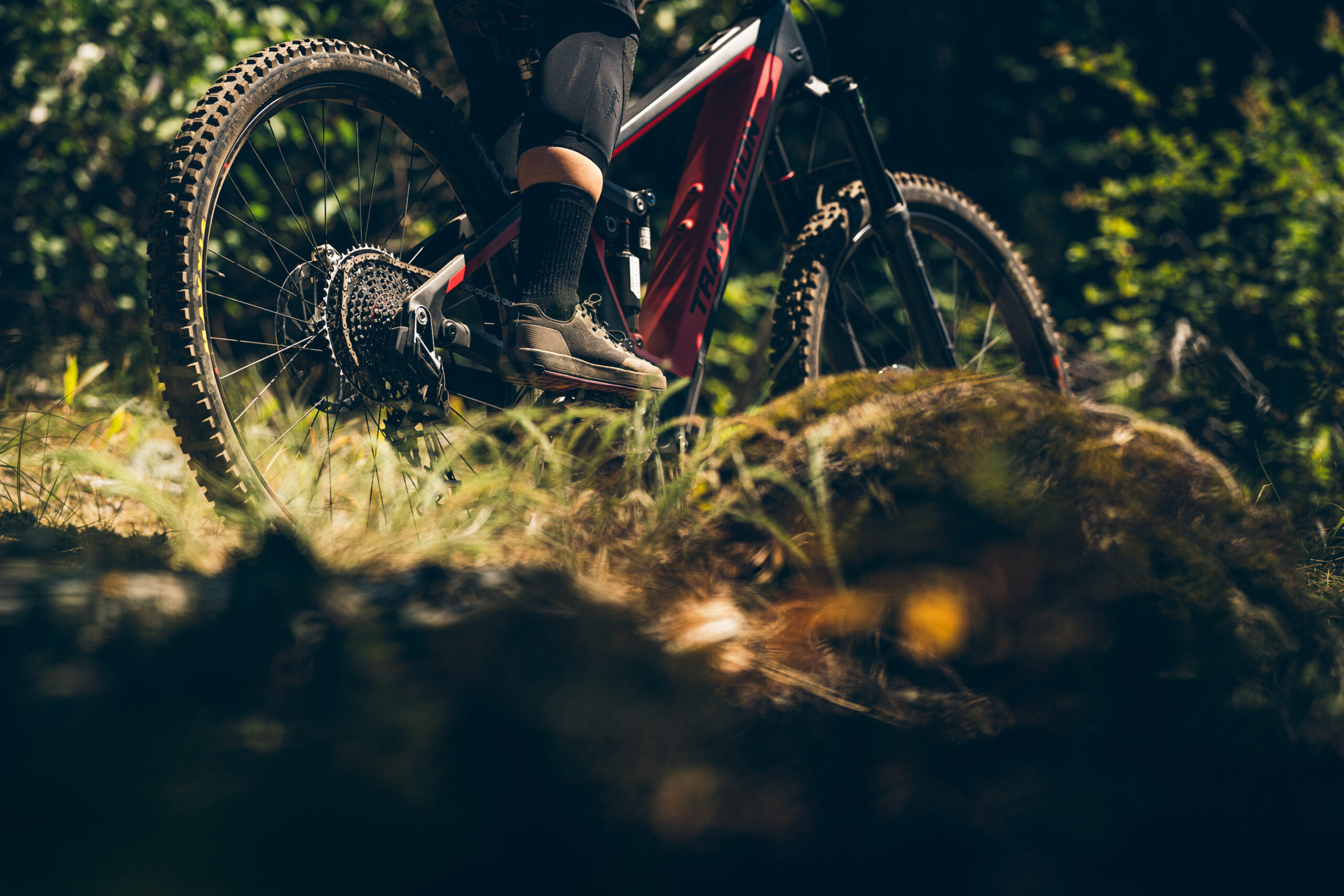
Some Questions / Things We’re Curious About
(1) Eagle-Powertrain-equipped eMTBs are surely going to be expensive, but how will they compare to eMTBs with other drive systems that are also running AXS Transmissions?
(2) Will two ride modes be enough, or will it feel like there needs to be something in the middle between Range and Rally?
(3) How useful will Auto Shift be? Will it be able to make the right decisions in technical terrain?
(4) The Eagle Powertrain is compatible with mechanical shifting, but will lose its Auto Shift and Coast Shift functionality — will we see brands spec it this way to keep the cost down?
(5) When are we going to see an AXS seatpost with more than 170 mm of travel?
(6) How will the Eagle Powertrain’s torque and power delivery compare to Bosch, Shimano, Specialized, and Rocky Mountain motors?
Bottom Line (For Now)
The announcement of SRAM’s new Eagle Powertrain is a bit of a mixed bag for me. I’m well aware of their engineering and manufacturing capabilities, and somewhat selfishly hoped they would make their own drive unit rather than partnering with an existing motor company — mostly because I wanted another motor option on the market, and thought SRAM could make a great one. Partnering with Brose does make a whole bunch of sense though, and I’m sure this freed them up to focus more on the other components and overall system integration. We’ve praised Specialized as having one of the more cohesively designed eMTBs, and we think the Eagle Powertrain has the potential to bring similar levels of cohesion to other eMTB brands, while also adding lots of new technologies to the mix.

What a great, comprehensive write up. Thanks! It all sounds good, except I’m a bit skeptical on having only two power settings. Bring on the ride reviews!
What bike mfger is involved?
Nukeproof was the first to announce a bike, with the Megawatt Carbon that dropped this morning (First Look is up on the site). More coming soon!